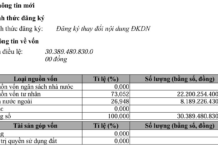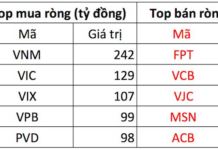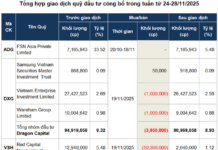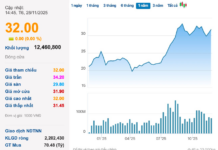Opportunities for the Development of a Semiconductor Industry Ecosystem
On April 17th in Hanoi, the Ministry of Science and Technology, the Ministry of Education and Training, and Hanoi University of Science and Technology co-organized a workshop on “Guiding Scientific and Technological Research and Human Resource Development for Vietnam’s Semiconductor Microelectronics Industry.”

Minister of Science and Technology Huynh Thanh Dat
In his opening remarks, Minister of Science and Technology Huynh Thanh Dat stated that semiconductor chips and the semiconductor industry are essential for various sectors in the technology era and are key to the digital technologies of the future.
The semiconductor industry plays a vital role in the global economy, with a market size of over $520 billion in 2023 and continuing rapid growth. For over 30 years, the semiconductor industry’s value chain has been established and has high barriers to entry, making it challenging for developing countries to participate.
“However, with the repositioning of the semiconductor industry’s value chain after COVID-19 and the technological competition among major economies, Vietnam is considered a country with many opportunities and essential factors to develop a semiconductor industry ecosystem, with the potential to improve its position in the global semiconductor supply chain,” said the Minister.
Nguyen Hoang Cuong, Head of the Semiconductor Technology Department of Viettel Group, noted that today, all sectors of the economy are powered by small chips – from computing, telecommunications, banking, security, healthcare, home appliances, to transportation (especially electric vehicles), manufacturing, entertainment, and many others.
Advancements in Artificial Intelligence (AI), the Internet of Things (IoT), Big Data, 5G telecommunications, supercomputers, and self-driving cars rely on the rapid development of the semiconductor industry.
As the “lifeline” of the digital economy, the semiconductor industry plays a crucial role and has become the focus of many industries worldwide. It is projected to generate over $620 billion in revenue by 2024 and reach $1,000 billion by 2030 (according to Gartner). This industry is also considered a core part of the technological competition among global powers in the 21st century.
According to Nguyen Hoang Cuong, with the trend of the semiconductor value chain shifting towards Southeast Asia, Vietnam is assessed to have all the necessary conditions and factors to develop semiconductor technology, from a stable political system, favorable geographical location, abundant raw materials, to a large number of technical and technological human resources and an increasingly developed digital infrastructure.
Vietnam’s Semiconductor Industry Market Expected to Reach $20-30 Billion
Recently, the legal framework to facilitate attracting investment and promoting semiconductor development has been prioritized. Thus, the Investment Law and the Law on Enterprise Income Tax have added special incentives for high-tech, large-scale, high value-added projects, including semiconductor manufacturing projects.

Nguyen Hoang Cuong, Head of Semiconductor Technology Department of Viettel Group.
As a result, Vietnam has attracted many leading corporations in the semiconductor microelectronics industry from developed countries such as the United States, South Korea, Japan, and the Netherlands (approximately over 40 companies). In addition, several domestic companies, including Viettel, FPT, and VNChip, have also entered the market.
The strategy for science, technology, and innovation development to 2030 has identified “microcontroller chip manufacturing technology, semiconductor components…” as one of the core technologies targeted for development in the coming decade.
During this time, several national scientific and technological programs have been established and implemented to realize the strategy. Examples include: National Product Program, KC 4.0/19-25 program on key technologies of the 4th Industrial Revolution, KC.03/21-30 program on automation engineering, National Program for High-Tech Development, etc.
Additionally, to support the development of microelectronics human resources, the Ministry of Science and Technology is continuing to implement the “Promoting Technology Transfer, Mastery, and Development from Abroad into Vietnam in Priority Sectors and Fields by 2025, towards 2030” project (Decision No. 1851/QD-TTg on December 27, 2018) and the “Project on Training, Fostering Scientific and Technological Human Resources in and outside the Country with State Budget” (Decision No. 2395/QD-TTg on December 25, 2015).
“In this project, the Ministry of Science and Technology focuses on activities related to technology acquisition and human resource training in the field of advanced microelectronics hardware design and manufacturing worldwide. Simultaneously, the Ministry of Science and Technology continues to guide the implementation of business incubation activities in microelectronics,” said Minister Huynh Thanh Dat.
Nguyen Hoang Cuong expects the size of the semiconductor industry in Vietnam to reach $20-30 billion by 2030 (according to information from the Ministry of Information and Communications), but only two domestic companies, FPT and Viettel, have entered the market in its initial stage, out of over 50 companies in the industry.
“Regarding production, Vietnam has packaging and testing factories of large corporations such as Intel and Amkor, but no manufacturing facilities have been established yet,” said Mr. Cuong.
In the context where many countries in Asia are determined to master this core technology, according to the Ministry of Information and Communications, Vietnam needs at least 50,000 engineers by 2030, 10 times the current number, to secure a position on the global semiconductor map.
Recently, due to the global shortage of chip manpower, many companies are returning to Vietnam. “To achieve the target of 50,000 semiconductor microelectronics engineers, universities must increase their human resources 10 times compared to the total achievement in the past nearly 20 years (over 5,000 people),” emphasized Mr. Cuong.





































